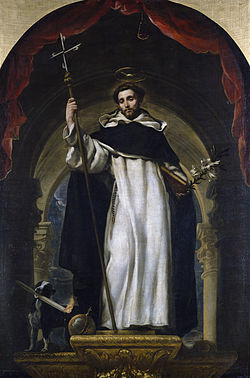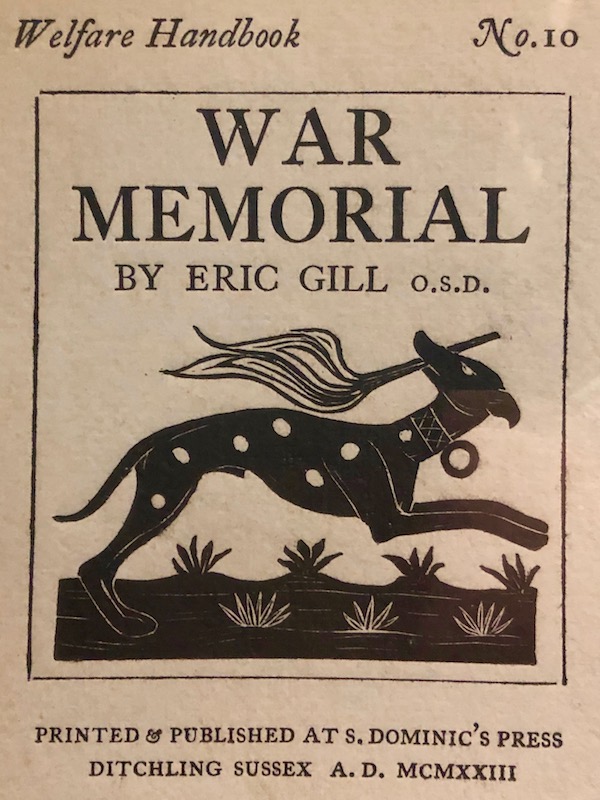Table of Contents
General

The Dominican enter the pre-history of the Guild with Father Vincent McNab. He was a Dominican Priest and therefore carried the letters OP after his name standing for Ordinis Praedicatorum, meaning of the Order of Preachers. The emphasis on preaching comes from a committent to persuading people of the truth of their persuasion by the force of intellectual argument. This aspect of their work was a key part of the reason St Dominic was adopted as one of the patron saints of the Guild. With St Joseph representing crafts, they combined to bring together the two key aspects of Guild life.

The Dominicans were what is known as a mendicant order of the Catholic Church, founded in France in 1216 by the Spanish priest Saint Dominic. Mendicants took a vow of poverty and, unlike monks were not obliged to live with a cloistered monastery but were expected to mingle with the community and travel between their houses, known as Friaries. The largest order of Mendicants is the Franciscans.
Dominicans wear a white habit, partially covered by a black cloak. For this reason, in England and other countries, they are known as the Blackfriars. Their activities focus on clear communication and preaching in the academic tradition. The most famous Dominican is Saint Thomas Aquinas (1225–1274), considered by the Catholic Church to be its greatest medieval theologian. He was a figure of great importance for members of the Guild and is the subject of one of David Jones wall paintings.
Organisation of the Dominicans
What is now known as the Dominican Family is a complex and multi-layered organisation which has changed over time. In particular, in 1968 the terminological references to first, second and third Orders in the Dominican Order were discontinued. However, in the early time of the Guild, the organisation was as follows:
First Order
The Friars, both brothers and priests, profess the vows of poverty, chastity, and obedience. They may be involved in a variety of ministries such as campus ministry, itinerant preaching, parish ministry, teaching in schools and universities, educational administration, religious education, authorship, catechetical formation, social work, psychology, health care, the arts, and household support.
Second Order
This consisted of cloistered nuns who take solemn vows of poverty, chastity, and obedience and dedicate themselves to a life of silence, prayer, and penance.” They support themselves through intellectual, manual, and artistic work. As part of the 1968 reforms, there is now another branch of Dominicans called Sisters for women who are active in the community.
Third Order
The Third order or tertiaries were lay men and women who wanted to make a committent to living a Christian life with a Dominican spirituality in the secular world. They were divided into chapters, having a lay prior and sub-prior or prioress and sub-prioress, and held regular meetings. The third order may included secular priests (i.e. priests who are not monastics or members of a religious institute) who, whilst being affiliated to the Dominicans through a Rule of life that they profess, are accountable to the local bishop. Since 1968, tertiaries are referred to as Lay Dominicans.
The Dominicans and The Guild
While it was Farther Vincent McNabb who introduced Gill and Pepler to the Dominican order, it was Desmond Chute who gave him the idea of become tertiaries. Chute himself was already a Franciscan tertiary and explained the system to Gill, being of the world but at the same time committed to a religious order.The idea of having it both ways appealed to Gill’s nature and he was to embrace the idea wholeheartedly.
The first five tertiaries from Ditchling were Eric and Mary Gill, Desmond Chute (who clearly had switched allegiance) and Herbert Shove. and they were meeting regularly as a chapter by the summer of 1920. Joseph Cribb soon joined them and Gill was the first prior.
In describing the first days of the Guild of St Joseph and St Dominic on Ditchling Common Fiona MacCarthy writes: ‘The seriousness of endeavour mixed with high-spirited excitement at the novelty of things, almost a sense of daring, comes over very strongly in the minutes of the early Tertiary meetings. It was a self-consciously arduous programme. This saying of the office in public, systematically, by Tertiaries was in fact unusual. It has no equivalent in the history of the Dominicans in England. No one ever before, as far as one can see, lived a lay tertiary life with the commitment of Gill and Pepler’s community in Ditchling.’
When the Guild was formed, it was a requirement that all applicants be tertiaries, although this was dropped in October 1928 at the suggestion of the Dominican Order. Presumably, they were uncomfortable with the idea that people may feel obliged to take on the role of tertiary for ulterior motives.
When Desmond Chute left the Guild to become a priest, he retained his membership of the Third Order. As such, he incorporated a pattern of Dominican living into his daily ministry without being accountable to the Dominican hierarchy. In this way, my understanding is that he was not bound by vows of poverty. Today, clergy who live in this way are referred to as members of the Dominican Priestly Fraternity.
Susan Faulkner’s memoir records that for services in the Chapel, tertiaries would sit at the front, facing each other while others would use the benches arranged facing the altar.
There was also a clause in the Articles of Association of the company that if the Guild was wound up, any surplus would be given to the Dominican Order. This was removed in 1972 and meant that the crafts-men and women were the effective owners of a valuable asset (the land on which the workshops stood) and this played a part in the eventually closure.
The Hound of St Dominic

Most depictions of St Dominic include a dog holding a burning touch in his mouth and, indeed, this became the emblem of the Guild.
The Dominican dog goes back to a vision St. Dominic’s mother supposedly had before she had him. Struggling with infertility, she was making a pilgrimage to the Abbey of Santo Domingo de Silos in Spain when she dreamed that a dog jumped from her womb holding a torch and set everything around them on fire. Her interpretation was that the child would later come to “light up the world” with his words. Soon after, she conceived a son with her husband and named him Dominic, after the abbey she had visited.
The dream was prescient due to a play on words in Latin. Dominicans in Latin, is Dominicanus, which is very similar to domini canis, or “dog/hound of the Lord.”

